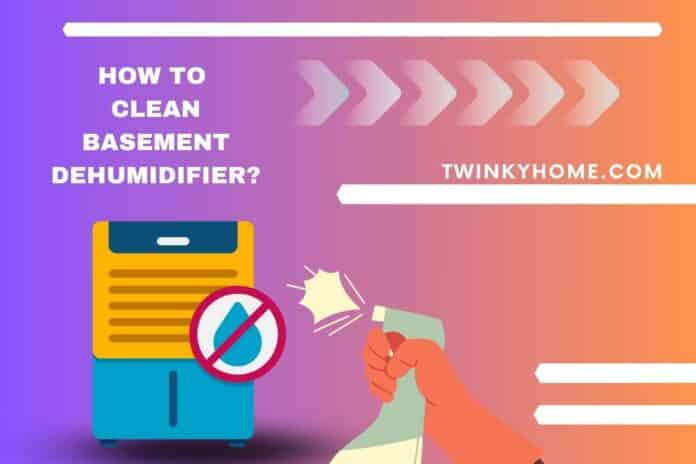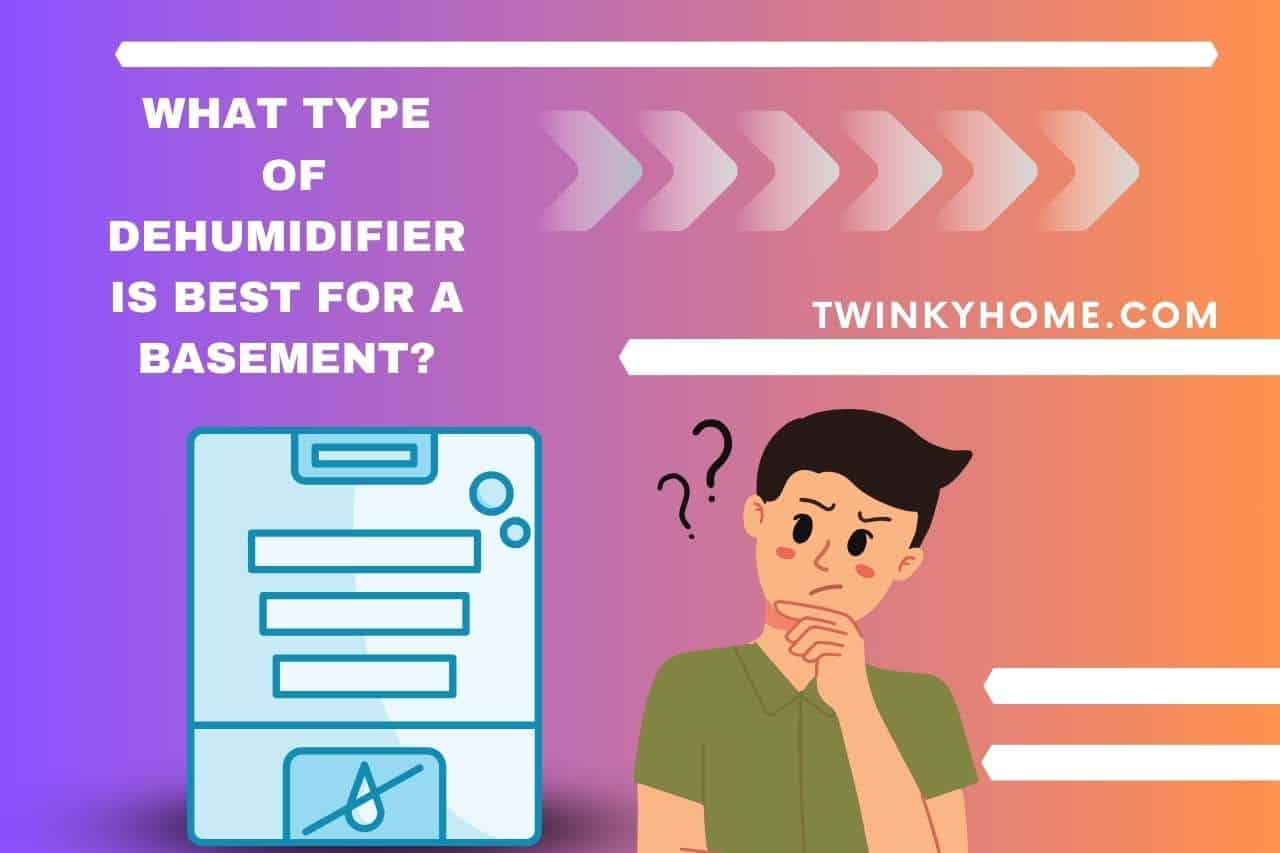This comprehensive guide on “How to Clean a Basement Dehumidifier” unlocks the secrets to maintaining optimal performance in your basement dehumidifier. A clean dehumidifier always works at the next level when compared with a filthy one by preventing issues like mold growth and potential water damage. So, discover precise instructions and expert tips to ensure your unit operates efficiently, creating a healthier and more comfortable living environment. From emptying the water collection bucket to cleaning filters, coils, and drainage systems, we’ve got you covered. Then, get ready to elevate your dehumidifier maintenance routine with our concise yet informative discussion!
How to Clean Basement Dehumidifier?
Cleaning your basement dehumidifier is crucial for maintaining its efficiency and ensuring a healthy environment. This systematic approach will surely help you to clean your unit without missing any part.
- Turn Off and Unplug: Before cleaning, turn off the dehumidifier and unplug it to ensure safety.
- Empty the Water Collection Bucket: If your dehumidifier has a collection bucket, empty it to prevent spills during cleaning.
- Remove and Clean the Filter: After that, take out the air filter and clean it according to the manufacturer’s instructions. Some filters are washable, while others may need replacement, so go through your user manual.
- Clean the Coils: Gently vacuum or brush the evaporator and condenser coils to remove dust and debris. This improves airflow and enhances dehumidification.
- Wipe Down Surfaces: Use a damp cloth to wipe down the exterior surfaces of the dehumidifier. Pay attention to any visible dust or dirt.
- Check Drainage System: If using a drainage hose, inspect it for clogs or debris. You can unclog it using a small brush. Ensure that the hose is securely connected.
- Inspect and Clean the Grills: Next, check the intake and exhaust grills for any blockages. Clean them using a brush or vacuum to maintain proper airflow.
- Inspect the Pump (if applicable): If your dehumidifier has a built-in pump, check its condition and ensure it is functioning correctly.
Regular cleaning, ideally performed every few weeks based on the above guide, will keep your basement dehumidifier operating at its best, promoting optimal performance and a healthier living environment.
How Often Should you Clean a Basement Dehumidifier?
You should clean your basement dehumidifier at least once every two weeks if it is used every day.
In fact, the frequency of cleaning depends on factors such as usage, the environment, and the manufacturer’s recommendations.
If the unit comes with a water collection bucket, you will have to empty it at least once a week.
Additionally, conduct a more thorough cleaning, including coil and grille cleaning, on a monthly or bi-monthly basis.
In environments with higher dust or humidity levels, more frequent cleaning may be necessary.
Regular maintenance not only optimizes performance but also extends the lifespan of your dehumidifier, ensuring it continues to effectively control moisture and create a comfortable living space in your basement.
Always refer to the manufacturer’s guidelines for specific cleaning intervals and procedures, especially if the dehumidifier is a modern one.
What Happens If you Do Not Clean your Basement Dehumidifier?
If you do not clean your basement dehumidifier, it can lead to several adverse consequences. Over time, dust and debris accumulate on the air filter and coils, hindering the unit’s efficiency. This inefficiency may result in prolonged drying times and increased energy consumption. Check the following points to have an idea about all those negative effects.
- Reduced Efficiency: Accumulation of dust and debris on the filter and coils hampers airflow, diminishing the dehumidifier’s effectiveness in moisture removal.
- Prolonged Drying Times: A dirty filter and coils result in longer periods to achieve desired humidity levels, impacting the overall efficiency of the unit.
- Increased Energy Consumption: Reduced efficiency necessitates more extended operation times. As a result, there will be higher energy consumption and increased utility costs.
- Mold and Bacteria Growth: Neglected cleaning creates a conducive environment for mold and bacteria within the unit, posing potential health hazards.
- Collection Bucket Issues: Failure to empty the collection bucket regularly may lead to overflow, causing water damage in the basement.
- Diminished Lifespan: Lack of maintenance increases the likelihood of malfunctions and reduces the overall lifespan of the dehumidifier.
- Unhealthy Environment: At last, mold growth and compromised air quality may contribute to an unhealthy living environment in the basement.
What Type of Dehumidifier is Best for a Basement?
A pump-equipped dehumidifier is the best choice for basements due to its added convenience in managing water drainage. These are the key features and benefits of pump-equipped dehumidifiers:
- Built-In Pump: These dehumidifiers come with a built-in pump that automatically removes collected water. The pump can move water vertically to a higher drainage point, such as a sink or window.
- Continuous Drainage: With a pump-equipped dehumidifier, you can set up continuous drainage using a hose. This eliminates the need for manual emptying of the water collection bucket, providing a hassle-free solution.
- Flexibility in Drainage Options: The built-in pump offers flexibility in choosing drainage points; thus, you can position the dehumidifier where it’s most convenient without being restricted by the proximity of a floor drain.
- Prevents Overflow: The automatic pump helps prevent overflow in the water collection bucket by efficiently pumping water out when the bucket is full.
- Low Maintenance: Pump-equipped dehumidifiers require less hands-on maintenance than models relying solely on gravity or manual emptying.
You May Also Like
- How to Drain a Basement Dehumidifier? Step-by-Step Guide
- How Long for Dehumidifier to Dry Basement? Unveiling the Drying Magic!
- How to Keep the Basement Dry Without a Dehumidifier? (Tips & Tricks)
- Does Dehumidifier in Basement Help Upstairs? The Ripple Effect!
- Whole House Dehumidifier vs Basement Dehumidifier – Choosing Wisely!
- How to Choose the Right Dehumidifier for the Basement? Basement Bliss!
- Why does My Basement Dehumidifier Ice Up? Decoding Dehumidifier Woes!
- Can you Run Two Dehumidifiers in the Basement? (Ins and Outs)
- How Long Should a Basement Dehumidifier Last? Investing in Comfort!








![OGX Biotin And Collagen Shampoo Review [Updated One] Ogx Biotin And Collagen Shampoo Review](https://twinkyhome.com/wp-content/uploads/2022/03/Are-chicken-Super-Noodles-vegetarian-1-100x70.jpg)